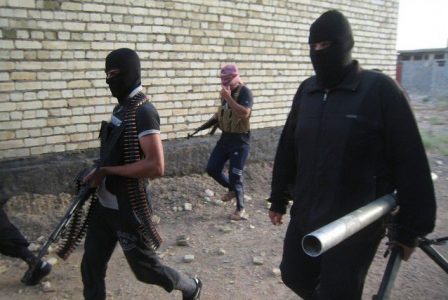
The future of the Islamic State and Khorasan front
Today, the Islamic State’s Khorasan front poses a challenge to the regional peace and stability and has added to the already deteriorating regional security situation. And the present scenario alludes that the group will continue to gain momentum in the years to come.
Presently, a crisis looms over the region amid the escalation of tensions between the United States and Iran. However, a calculated response by the US might not incorporate a direct military confrontation but rather confronting Iran with indirect or non-military means. This has already been demonstrated by the execution of cyber-attacks by the US military on the Iranian weapons system including its rockets and missiles. In the foreseeable near future, the US could also use proxy forces in Iran with the IS-KP being the desirable candidate given the group’s expansionist and anti-Shia agenda. The US has already been accused by Iran and Russia of supporting some segment of the IS-KP in Afghanistan so as to threaten neighbouring states.
Moreover, today with the realization of the Taliban as being the lesser of the two evils, Iran, Russia and China have come to recognize the political legitimacy of the Afghan Taliban and have been engaging with the group. The compelling motives for China’s growing involvement in Afghanistan and thereby the growing association with the Taliban include its interest in the erosion of the need for NATO’s presence in Afghanistan. Moreover, China also aims to protect the construction and transit security of its ambitious Belt and road initiative. In addition, mitigating safe havens for the East Turkestan Islamic movement and preventing the expansion of the Islamic State Khorasan elements to China’s Western region of Xinjiang are other compelling motives. Similarly, Russia and Iran also view an engagement with the Taliban as being the only approach to counter the threat being posed by the IS-KP.
With India being isolated in the aforementioned context, it might view an assistance to the IS-KP as being a viable means of furthering its regional agenda and outdoing the efforts on the part of its regional competitors, particularly China and Pakistan, to procure their interests. As a matter of fact, Afghan Taliban’s rhetorical assurance to not let the Afghan soil be used for extra-territorial terrorism will remain unfulfilled as long as the militant groups including the IS-KP continue to receive the support of outside actors. Additionally, as long as the Afghan Taliban continue to be strengthened by the support of outside actors including Russia, China and Iran, suspicions exist that the members of the Northern Alliance will be joining hands with the ISIS so as to diminish the group’s rising muscle.
Further, there are firmly held suspicions that negotiations with the US could drive wedges among certain factions of the Afghan Taliban. As a result, some of them might be allured to join forces with the Islamic State militants. Moreover, the regional setting is also conducive to Islamic State’s recruitment strategy given the region’s weak governance and state structures. The group will continue to exploit the situation in order to strengthen its foothold. This could pose devastating consequences for the regional states that are particularly being threatened by the rising influence of the IS-KP and would increase the latter’s buoyancy.
The question arises that what are the options for Pakistan, Iran, Russia and China in this conceivable scenario. There is no denying the fact that the ever-growing threat needs to be countered on the military front. However, this needs to be supplemented by measures taken so as to counter the recruitment strategy of the Islamic State given the fact the group’s triumph and the ability to extend its operations is determined by the number of its fighters.
This needs to be done by creating conditions that negate the group’s narrative and decrease its ability to influence individuals into its own sphere of influence. Hence, a concerted counterterrorism and counterinsurgency approach should be followed by the regional states also with the possible inclusion of India. This will be a win-win situation for all given the fact that instability in any one of the regional states ultimately spills over to the neighbouring states.
Source: Nation





